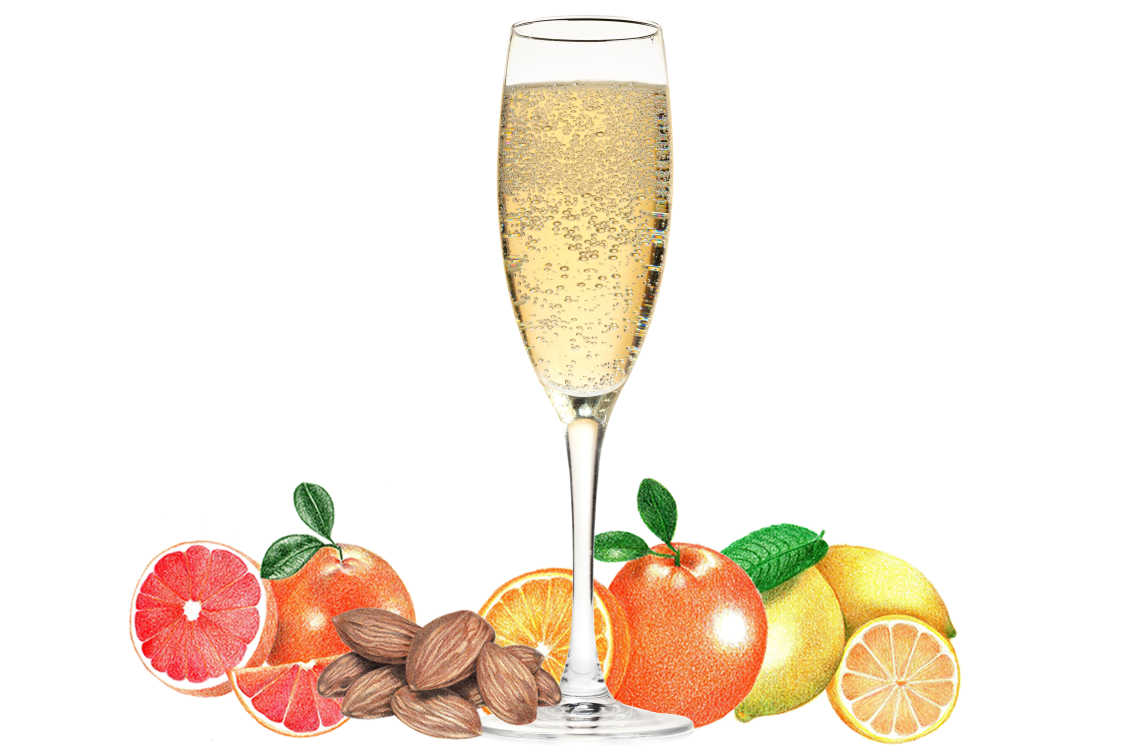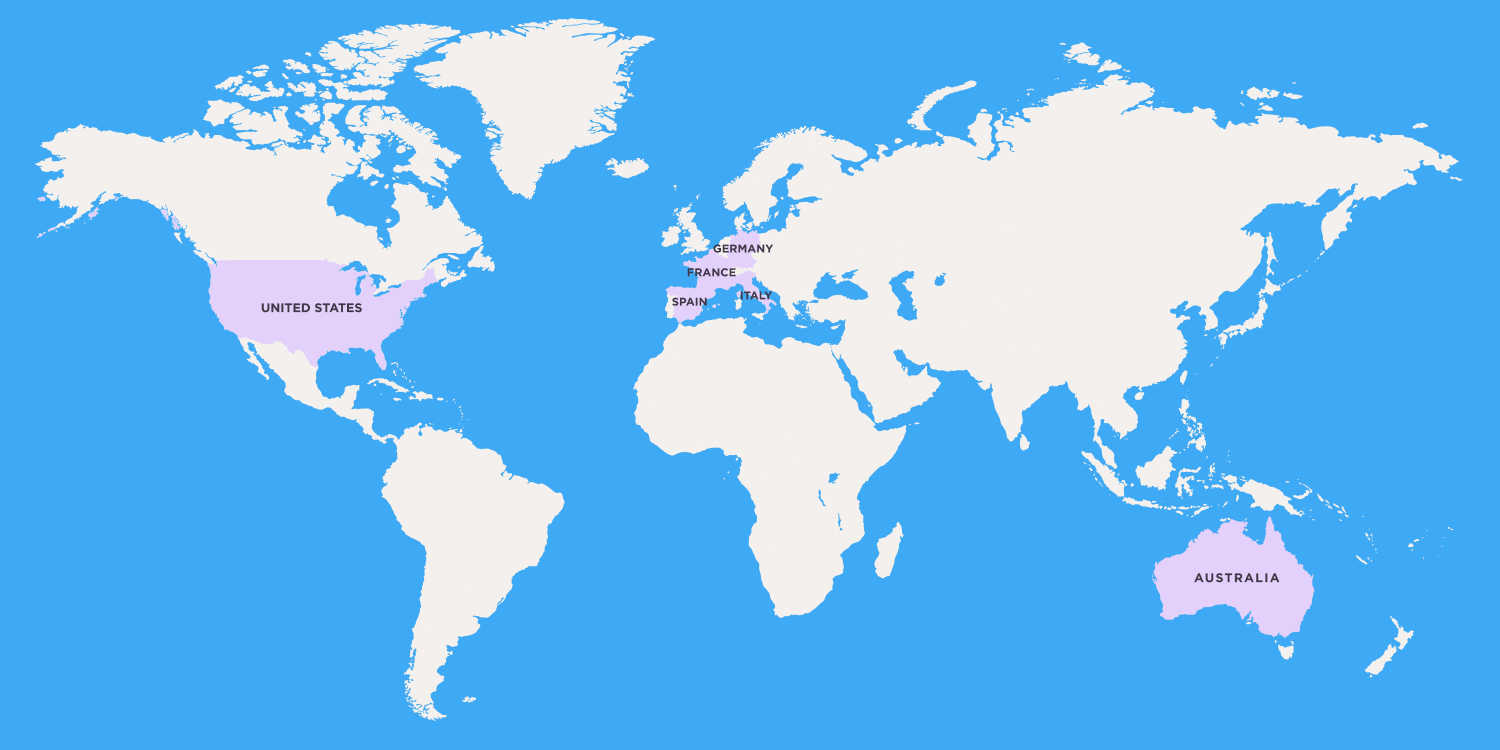Sparkling Wine
Sparkling wines are bubbly and refreshing and made in many different styles around the world
Simply put, a sparkling wine is a wine with bubbles. Sparkling wines can be red, white, or rosé, but all have fizziness and effervescence caused by carbon dioxide, and are oftentimes sealed with a caged, "poppable" cork. Wines from the Champagne region are the most recognizable and revered of these sparklers, but regional iterations are made everywhere from Northern Canada to South Africa and Australia.
The sparkling nature can come from multiple methods, but all aim to capture a beautifully textured sip of wine.
Sparkling wines are often synonymous with celebration, and in recent years, playful pairings like fried chicken and Champagne have made these wines even more accessible, taking them from white table cloth dining to enjoyable everyday drinking.
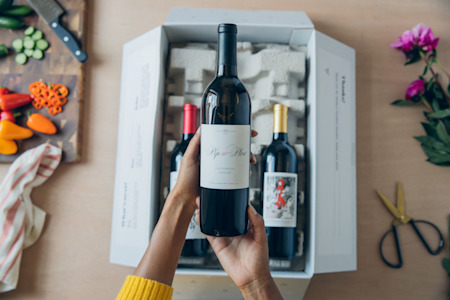
Take Our Quiz Today
Get award-winning delicious wines from all over the world shipped straight to your door. Take the quiz to get the perfect pairings for your holiday season.
Take The Quiz TodayIN THIS ARTICLE:
History of Sparkling Wine
Slight bubbles have been present in wine since ancient times, but the process was little understood and even considered a fault by the Greeks and Romans.
Eventually, however, winemakers began to produce sparkling bottles that captured the public imagination. The real surge in popularity came alongside the invention of stronger glass bottles that could take the pressure of the increased carbon dioxide. English glassmakers were forced to abandon wood-fueled fires for coal, which produced bottles that could handle sparkling wines. They were also able to rediscover the use of cork as a bottle stopper, a practice that was lost with the fall of the Western Roman Empire.
From there the wine took off and we began to see examples coming from Italy, Spain, and then on to the rest of the world.
Fun Fact
Supposedly (although it is more likely a marketing ploy), upon his first sip of Champagne, the 17th century Franciscan monk, Dom Pérignon is commonly credited with saying “Come quickly, I am tasting stars!”
How is Sparkling Wine Made?
Virtually any grape can act as a base for sparkling wine and when it comes down to it, it’s all about how to get those signature bubbles into bottles. There are many different methods that can be used to make sparkling wine, each with its own merits. The types are: traditional method, ancestral method, transfer method, dioise method, Charmat method, continuous method, and the soda method. Here we are going to highlight the two most popular.
The traditional method, or méthode Champenoise sees still wines blended and fermented in a barrel. The next step is adding a combination of yeast and sugar to the wine before bottling. During secondary fermentation, the base wine is joined by sugar and yeast in the bottle, with the yeast particles eventually tapping out and transforming into lees, an essential element that provides both texture and flavor. A process called riddling moves the lees or sediment to the neck of the bottle where it is disgorged. Sometimes there is the addition of sugar, more wine, or a blend of both that is added to balance out the final product.
The labor intensive Champagne method inspired an innovation during the early years of the 20th century. Charmat, or tank method cuts down on both production time and cost by eliminating secondary fermentation in bottle, riddling and disgorgement. Instead, the carbonation of sparkling wines using the Charmat method go through first and second fermentation in large tanks before being filtered. Similar to sparkling wines made using the traditional method, dosage can occur just before bottling.
Fun Fact
Champagne house Mumm and France’s national space agency are working together to engineer a bottle that can be enjoyed in a zero gravity.
What does Sparkling Wine Taste Like
More than any other wine, enjoying sparkling wine is a sensory experience, encompassing sight, sound, smell, taste and mouthfeel. A brief inhale from the top of a glass or flute sends tingling through the nose, and the first sip brings pleasant little prickles to the tongue. Primary flavors include light hints of citrus and pear, but the secondary flavors that come from the fermentation process are often more powerful and can be described as bready or nutty.
Sparkling Wine Characteristics
The most sought after sparkling wines come from the Champagne region and are made using different blends of Chardonnay, Pinot Nior and Pinot Meunier. In Champagne, wines are characterized on a scale of sweetness to dryness: doux, demi-sec, brut, extra brut and brut nature.
This scale can be used to describe sparkling wines made from varietals all around the world. Whether a sparkling wine is made with red wine, white wine or a combination of both, it can vary in sweetness, dryness, flavor and mouthfeel.
Vintage Champagnes are known for their nutty, toasty notes and tiny bubbles, while Prosecco leans more fruit forward with more aggressive carbonation. Some red sparkling wines like Lambrusco have bright red fruit flavors that shine in the sea of carbonation.
Sparkling Wine Nutritional Facts
The nutritional values of sparkling wines vary greatly depending on two factors: alcohol and sugar. It is important to know that many sparkling producers add sugar to increase the carbonation. Drinking a brut or extra brut wine means that the sugars have all been fermented out, and these tend to be one of the lowest calorie options for all wines. Alcohol content is typically low to medium in sparkling wines.
How to Serve and Store Sparkling Wine
If you are planning on aging a sparkling wine, treat your bottles as you would any others that you are planning to lay down. For aging you will need a cool, dark place where bottles can be stored out of direct sun, heat and an over abundance of humidity. A good temperature to shoot for is a consistent 55 degrees Fahrenheit. Once you are ready to open a bottle, there is no need to use a corkscrew. Instead, a dishtowel and a bit of finesse is all you need. To begin, loosen and remove any foil covering the cork, then gently untwist the wire cage while keeping it in place with one hand. It is there to help you from shooting the cork across the room and taking out someone's eye.
A tip is to hold the cork still with one hand and twist the bottle. This will give you more control over the opening and keep people around you safe. While a loud pop is fun, a gentle opening reduces chances for overflow, and loss of precious bubbles.
When it comes to choosing the correct vessel for your sparkling wine of choice, coupes and flutes might be visually striking, but don’t shy away from a traditional wine glasses. These roomier glasses allow for both room to breathe and aromas to be enjoyed on the nose.
One trick you may have seen is called sabering. Typically practiced by sommeliers, this is one method that cuts the top of the bottle off with a blunt strike, and uses the pressure inside the bottle to propel it away from the bottom of the bottle. This practice is incredibly dangerous for non-professionals and often results in amateurs destroying a special bottle in front of their guests.
Fun Fact
A legendary lover of all things fizzy, in just one year, Sir Winston Churchill stocked his cellar with 174 bottles of vintage Pol Roger Champagne along with 84 bottles of sparkling wine from the Moselle region. This was only a fraction of an order that included dozens of bottles of Bordeaux, port, whisky, brandy, gin and vermouth.
What to Pair with Sparkling Wine
While there are general rules to pairing, we think it is important to drink sparkling wine with the food you like. The great news is that sparkling wine pairs with almost anything. It is a sommeliers secret weapon for a tricky pairing, because it has high acidity and great texture. It goes as well with pizza as it does with fried chicken. It can be paired with rich foie gras or with a bread course. Sparkling wine is truly a workhorse for pairings.
Sparkling Wine Regions Around the World
Since sparking wines can be made from countless grapes grown all over the world, the style is not limited to one region.
France:
Champagne is France’s capital of all things bubbly, but winemakers throughout the country have been making their own sparklers for hundreds of years. Some of the country’s oldest producers are located in Limoux, a town in the Languedoc region where monks began working with a local grape called Mauzac for special occasion wines. Various styles of Cremants (sparkling wines made in the Champagne style) come from all over the country with great examples coming from Alsace, Jura, and Burgundy. Sparkling wines made using the Charmat method (secondary fermentation in tanks instead of bottles) are known as Mousseux and popular in other wine growing regions of France.
Spain:
Spanish sparkling wines are known as Cava, and made using Macabeo, Xarel-lo, Parellada along with the more traditional Chardonnay and Pinot Noir grapes. Josep Raventos is credited with producing Spain’s first bottles of Cava in 1872, in the Penedes region, outside of Barcelona. Today Codorniu Raventos’ family vineyard, and Freixenet remain the two largest producers of Cava in Spain. Cava typically spends more time aging than some of the other styles of spakling wine around the world.
Italy:
Italian sparkling wines have been big since the 1950s when sweet, fizzy bottles of Asti Spumante from Piemonte were all the rage. In recent years, the dry Proseccos of the Veneto have become go-tos for affordable Italian bubbles. Light and fruity Moscatos have gained favor for their low alcohol content and bright notes. While most of Italy’s Spumante wines are produced using the tank method, Franciacorta from Lombardy is made with the Champagne-like combo of Pinot Nero and Chardonnay grapes, and the final stage of fermentation occurring in the bottle. Lombardy is home to one of Italy’s most lighthearted sparklers, Lambrusco, a fizzy, easy drinking red that’s best enjoyed chilled.
United States:
The first sparkling wines in the United States can be attributed to the Korbel brothers who set up shop in the Russian River Valley and started making sparkling wine back in 1892. France took note as California’s wine culture grew and several Champagne houses including well-known names like Moet and Chandon and Roederer Estate bought land in Napa and Sonoma and began making California cuvees. Over on the East Coast, New York vintners inspired by Germans have been making their own takes on elegant sparkling Rieslings.
Australia:
In Australia, sparkling wines have gained a lot of traction with Tasmania becoming the heart of bubbly country. Aussie winemakers have had lots of luck with the Champagne trinity of Chardonnay, Pinot Noir and Pinot Meunier, and they also have a fondness for fun sparkling Shiraz.
Germany:
In Germany, high end sparkling wines known as Deutscher Sekts are made with locally grown grapes such as Riesling, Pinot Blanc and Pinot Gris. Other bubblies, also referred to as Sekts are made with grapes imported from Italy, and are sold at a lower price point.
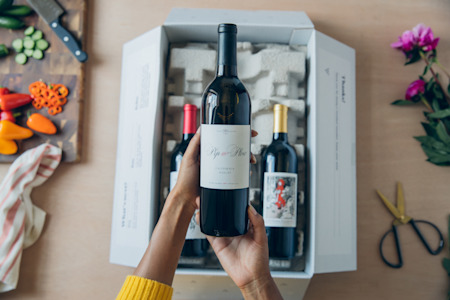
Take The Quiz
Learning about different wine varietals and regions is fun. Take the quiz now to explore wines matched to your unique palate.
Take The QuizIN THIS ARTICLE
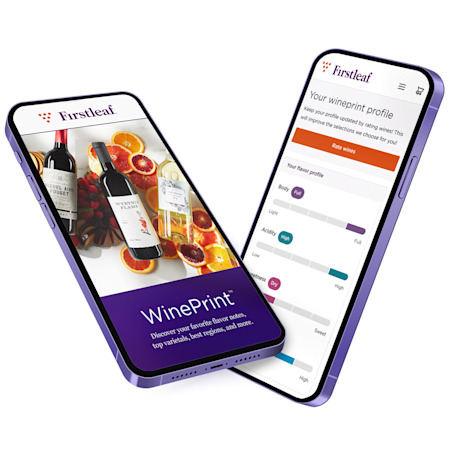
WinePrint™ by Firstleaf
Are you looking to learn more about your wine preferences? Check out our Wine Print for an in-depth look at your personal tasting profile. Discover your favorite wines, varietals, regions, and tasting notes and get personalized recommendations wherever you are.
Learn More